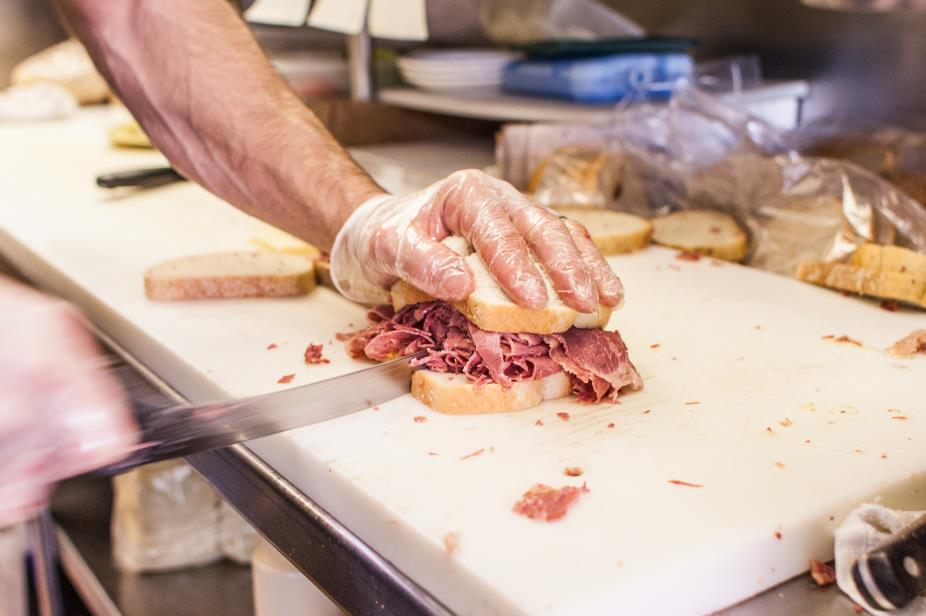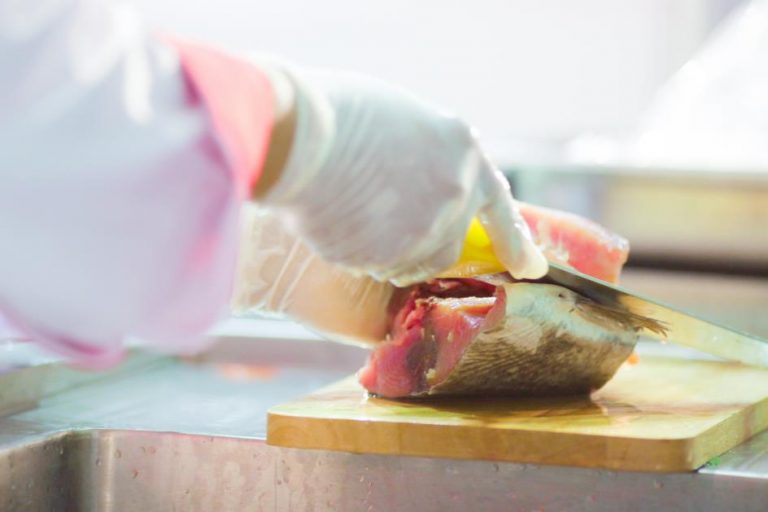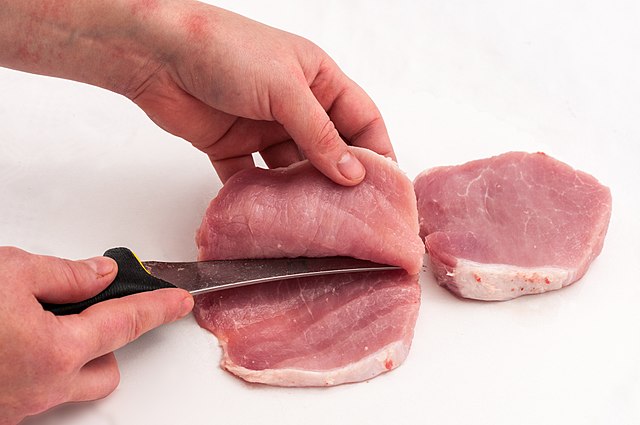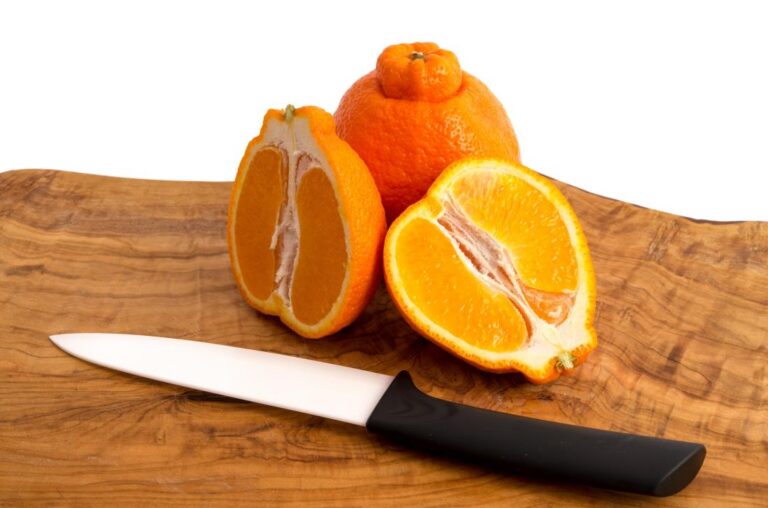Slicing and carving knives are synonymous with each other for many knife shops and their customers alike. The slicing knife has numerous varieties that can sometimes uphold the duties of a carving knife.
The same goes the other way around. A carving knife can slice ingredients in a similar way as the other, given it has an adequate length. That’s why many cooks can’t really differentiate these two frankly different kitchen knives.
Despite their likenesses, which are plenty, the slicing knife and carving knife are two distinct kitchen knives. This article will help you distinguish one from the other, covering their design, uses, and cutting preferences.
What is a slicing knife?
The slicing knife is the primary slicer for cooks in most kitchen tasks. When the dishes require thinly sliced foods, it delivers clean cuts that are ideally tear-free. A good portion of slicing knives features the Granton edge. The indented parts running across the bottom of the blade create air pockets, helping with food separation.
Here is more to the slicing knife’s design and culinary uses.
Knife design
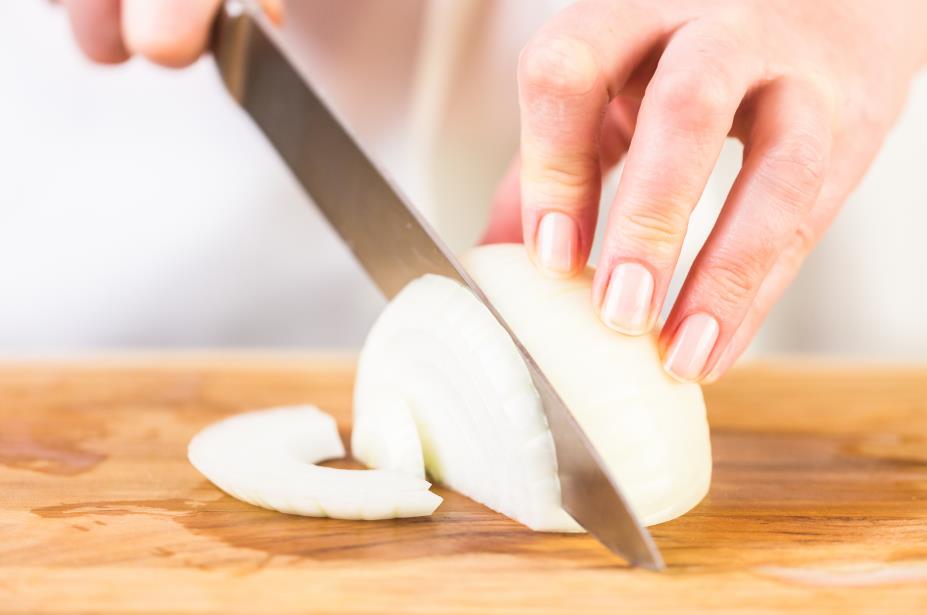
The slicing knife has a long, narrow blade with either a pointy or round tip. The ones with a rounded end resemble a rectangular blade profile that’s long. These slicing knives almost always have a straight edge with a slight curve towards the tip.
The lengths range from 8 to 15 inches. The longer the blade, the less the cook needs to move the knife back and forth, resulting in cleaner cuts.
Cooks can utilize the slicing knife to make a single cut by simply pulling or pushing the blade. Moving the knife creates less friction when cutting, and the Granton edge helps with this even more.
Culinary uses
The slicing knife’s primary purpose is to slice ingredients, hence the name. It’s pretty self-explanatory, but slicing is a general task in the kitchen. Cooks don’t need to pick up a dedicated knife for this every time.
A chef’s knife is just as ideal for slicing vegetables, herbs, and other ingredients for dishes. If the cook used a dedicated knife for every task, they would pick up a different blade for various cutting styles. So, it’s more efficient for cooks to use a slicing knife for only slicing duties.
Chefs use a slicing knife for its efficiency. A dedicated slicing knife is perfect for thinly slicing cured meats, preparing ingredients for casseroles, and cutting vegetables to layer dishes.
We’ve also brought together an article on the uses of a slicing knife. Check it out to learn more about where your customers can employ a slicing knife.
Buy Wholesale Knives and Start Scaling up with Us Today
Contact us and connect with a sales rep to get a free quote.
What is a carving knife?
The carving knife is a chef’s go-to choice for carving whole poultry, in-bone roasts, and other dense cuts of meats. Much of the things discussed about the slicing knife also apply to this knife.
Here is a brief explanation of the design and uses of a carving knife.
Knife design
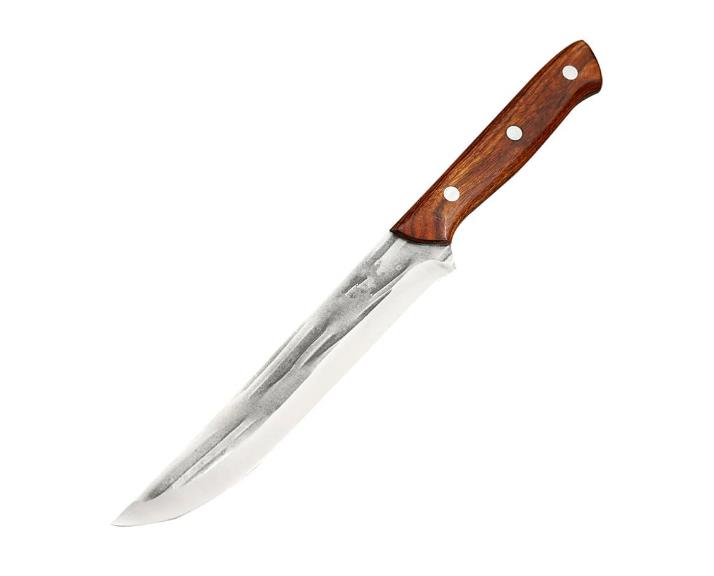
The carving knife features a narrow blade that’s still long but not as lengthy as the slicing knife. Most carving knives have a maximum blade length of 12 inches, similar to chef’s knives.
The pointy tip is essential to the carving knife. It makes carving duties easier by enabling the cook to go around the joints and bones confidently.
The carving knife’s edge and spine generally come down equally. This blade design creates an incredibly sharp tip that pierces ingredients without tearing. Since incisions on roasts and poultry start with stabbing, the tip is sharper.
Culinary uses
The carving knife is the kitchen tool for breaking down rotisserie chicken, in-bone roasts, and cutting dense cuts of meat and squash.
The end of the knife helps disjoint poultry, remove connective tissue, score meat, and separate the meat from bones. All while the cook can do these with a carving knife, they can continue slicing.
The carving knife’s ability to also thinly slice is one of the reasons why cooks commonly mistake the two.
Overall, the carving knife is best for its intended purpose. It’s also good for cleaning up meat, cutting whole poultry into pieces, and precision tasks requiring a lengthier blade than a utility knife.
Slicing knife vs. carving knife
Explaining the individual characteristics of the carving knife and slicing knife is enough to find where they differ. Here is more to these differences and how they create a different cutting style.
Knife design
The resemblance between the carving and slicing knife is very minimal. Only tiny details separate the two.
An easy way to differentiate the two is by looking at the tip.
If it has a round, dull end, it’s a slicing knife. The knives with a pointy tip are likely for carving, but slicing knives also have this feature. This similarity is one of the reasons why many cooks can’t distinguish the two.
Another difference is in the blade thickness and flexibility.
Taking a boneless animal protein and thinly slicing it requires a slim blade. This, and the type of steel used for making western kitchen cutlery, makes slicing knives have some flexibility – not as much as a boning or fillet knife, but noticeable enough.
On the other hand, the carving knife has a stiff blade that doesn’t bend easily or not at all. Other than these differences, the carving and slicing knives look almost identical. They also have comparable services in the kitchen.
Uses
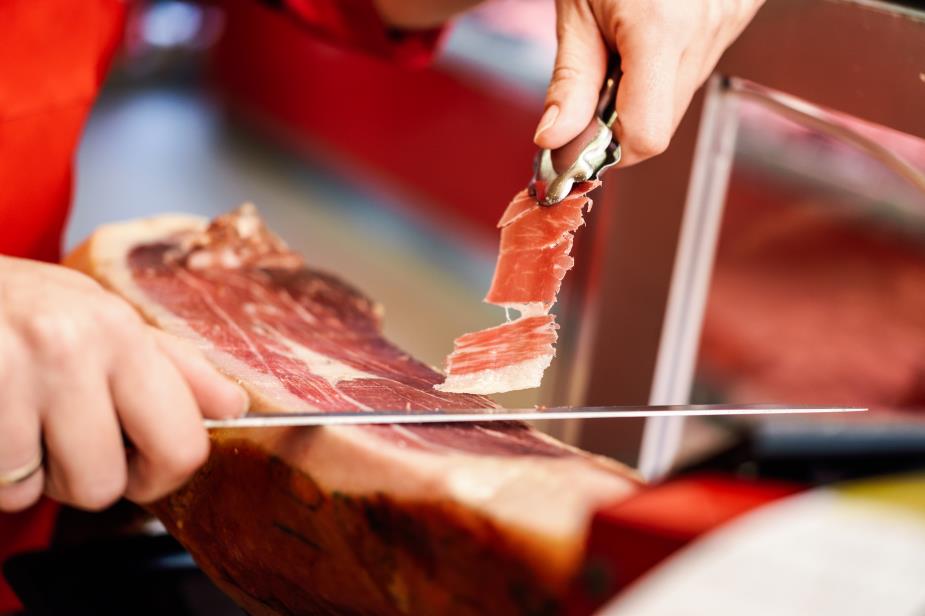
The culinary uses of these two knives are relatively the same. However, one does specific cutting needs better than the other.
The slicing knife gets the job done better for general cutting needs and creating uniformed pieces. Think slicing a whole bag of potatoes for a cheesy casserole. The carving knife is the superior option for breaking down whole poultry into pieces, whether cooked or raw.
These two kitchen knives have their specific use cases. Nonetheless, the carving knife is also able to fulfill these cutting needs. It may not slice ingredients as thinly and cleanly as the slicing knife, but it’s a good alternative.
Cutting technique
Despite the similarities, how the cook cuts with these two knives are also somewhat different.
The slicing knife cuts the best with a single stroke. The cook pulls the blade towards themselves or pushes it away to ensure the slices are tear-free and smooth. This is the reason why slicing knives usually have longer blades.
There isn’t a specific cutting style with carving knives. The cook separates the cuts they want and slices right in. Since they have shorter blades, the cutting technique mentioned above doesn’t work with carving knives.
They cut the same as utility knives, but the lengthier blade profile doesn’t require the sawing motion. Because most cooks prefer using the same blade throughout, they will continue using the carving knife to portion the plates.
How about the chef’s knife?
A chef’s knife is also ideal for all these culinary needs. It’s the all-purpose kitchen knife that a chef should be able to handle numerous tasks with ease. Although using a chef’s knife to carve a whole turkey or thinly slicing hams may not be as manageable, it’s still a proper alternative.
Read more on how the carving knife and chef’s knife compare to one another.
There are plenty of options to choose from with chef’s knives. If you think your customers will appreciate a chef’s knife that can do these tasks, check the catalogs on our homepage.
Buy Wholesale Knives and Start Scaling up with Us Today
Contact us and connect with a sales rep to get a free quote.
Utility knife vs. carving or slicing knife
The utility knife can be an excellent secondary pick to the slicing and carving knife. Cooks favoring a small blade can get so many uses out of a utility knife. From the slicing duties to carving, the utility knife is ideal for knife shops selling products to culinary schools and home cooks.
Which is a better choice for your store?
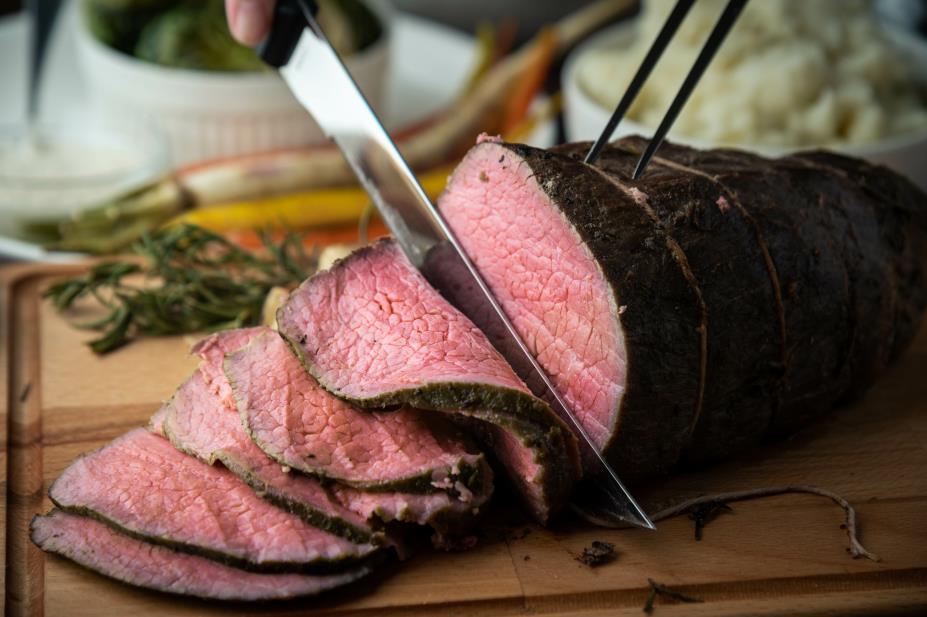
As with choosing to sell any other kitchen knife, making a decision can be straightforward or troubling. We’d say why not sell both – but we also acknowledge that not all knife stores have the budget to stock up on various products.
The easiest way to decide is to take a closer look at the preferences and needs of your customers. The carving knife is a better-fitting choice if you’re appealing to home cooks.
Firstly, home cooks won’t need a dedicated knife to slice ingredients often. Carving knives are more versatile where they can provide more uses than just carving. The slicing knife isn’t so different but isn’t as sturdy. Therefore, there is some limit to its uses.
While the carving knife offers more usefulness to home cooks, professional chefs and culinary arts students also need a slicer. Examining your target customers is the best approach to making this decision.
Final words
Regardless of your choice and what you’d like to see in the products you sell, LeeKnives can help. We are a leading knife manufacturer located in the heart of China’s knife capital, Yangjiang City.
In addition to wholesale services, we offer OEM manufacturing to create the best products for your knife store. You can specify everything you want the products to feature, including the materials, and we’ll deliver them to your front door.
Contact us to request a quote. LeeKnives is ready to be the only supplier you need.
